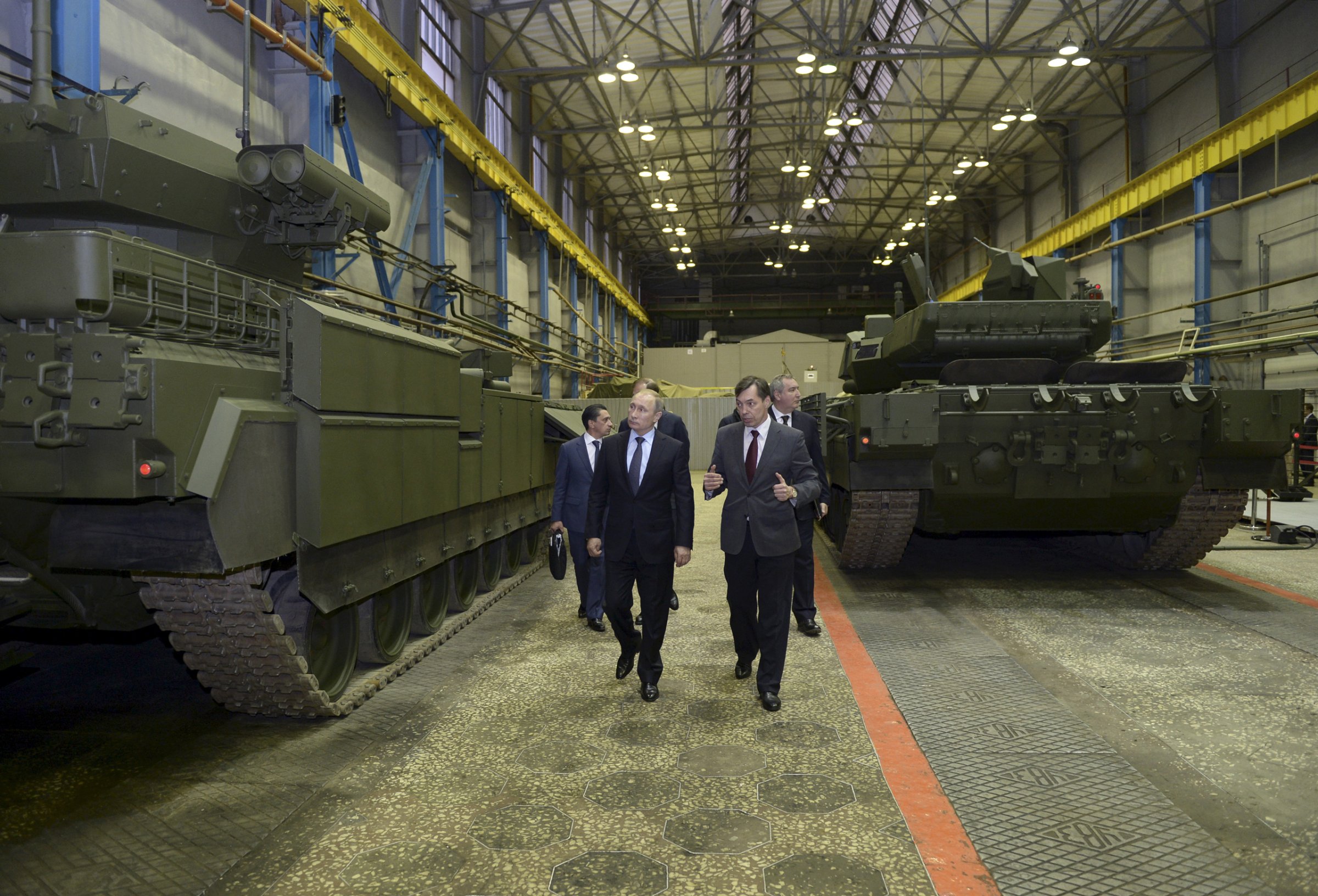
On Friday evening, at the end of the final nuclear security summit of his tenure, President Barack Obama took a swipe at his Russian counterpart, Vladimir Putin, for standing in the way of nuclear disarmament. Obama’s remark was pointed, calling out Putin by name, and it cast a rare bit of light on the personal clash between the two presidents on an issue that both of them see as central to their legacies.
“Because of the vision that he’s been pursuing of emphasizing military might,” Obama told reporters at the summit, “we have not seen the type of progress that I would have hoped for with Russia.”
This was putting it lightly. Over the course of Obama’s presidency, Russia has managed to negotiate deep cuts to the U.S. arsenal while substantially strengthening of its own. It has allegedly violated the treaty that limits the deployment of nuclear weapons in Europe and, in the last few years, it has brought disarmament talks with the U.S. to a complete standstill for the first time since the 1960s. In its rhetoric, Moscow has also returned to a habit of nuclear threats, while in its military exercises, it has begun to practice for a nuclear strike, according to the NATO military alliance.
But of all these stark reversions to the posture of the Cold War, nothing expressed Russia’s position on nuclear disarmament more clearly than Putin’s decision to skip the nuclear summit in Washington last week. Apart from North Korea, which was not invited to the talks, Russia was the only nuclear power not to send a senior delegate.
The snub was no surprise. It was announced back on Nov. 5 in a statement from the Russian Foreign Ministry, which offered a curious explanation. By influencing the policies of global watchdogs like the International Atomic Energy Agency, “Washington is trying to take the role of the main and the privileged ‘player’ in this sphere,” the statement said. In part because of this, “we have shared with our American colleagues our doubts about the ‘added value’ of the forum.” Russia therefore saw no need to participate, the Ministry said.
Read More: Obama Says the Risk of ISIS Getting a Nuclear Bomb Is Real
A few days after that statement, the world got a more colorful reminder of Putin’s position on nuclear disarmament. During a meeting at the Kremlin with his top generals on Nov. 10, he accused the U.S. of trying to “neutralize” Russia’s nuclear arsenal by building a missile shield over Europe, one that could knock Russian rockets out of the sky. In response, he said, Russia would have to “strengthen the potential of its strategic nuclear forces,” including the deployment of “attack systems” capable of piercing any missile shield.
As if on cue, a state television camera then zoomed in on a piece of paper that one of the generals was holding in his hand. It showed the plans for a nuclear device codenamed Status-6, complete with a curt definition of its purpose: “to create an extensive zone of radioactive contamination” along the enemy’s coast, rendering it uninhabitable “for a long time.”
Asked to comment the following day, Putin’s spokesman claimed the image had appeared in the nightly news by mistake. But the Kremlin’s mouthpiece newspaper then followed up with details. The warhead inside Status-6, it said, would likely be covered in cobalt, an element which would “guarantee the destruction of all living things” once it was irradiated and scattered by a nuclear explosion.
Vladimir Dvorkin, a retired major general of the Russian strategic rocket forces, remembers such designs from his days developing nuclear submarines for the former Soviet Union. “It’s an old Soviet brainchild,” he told me by phone from Moscow. But he never expected to see it revived. In the 1990s and during first two years of Putin’s presidency, Dvorkin headed the main nuclear research directorate of the Russian Ministry of Defense. The emphasis throughout those years was on cooperating with the U.S. to secure nuclear stockpiles and keep them out of the hands of terrorists.
The reemergence of Status-6—even if more as a propaganda ploy than as an actual weapon—shows just how far relations have fallen since then. “The idea is to creep up on the seaboard of the United States and set off a massive nuclear explosion,” says Dvorkin. “It’s being revived in order to spook the West.”
Few in the West had expected to hear such spook stories again. For Americans, a nuclear arms race is the stuff of Cold War fiction. But for Russians, or at least their leaders, the world still looks much as it did in the age of the nuclear arms race.
Read More: Don’t Let Vladimir Putin Destroy NATO
That became clear to many of Obama’s top advisers soon after his Administration took office. During a landmark speech in Prague in the spring of 2009, Obama described his vision for a nuclear-free world. The timing and venue were both highly symbolic. Earlier the same week, the newly-elected President had come to Europe for a summit of the NATO alliance, which had just extended membership to two more formerly communist nations, Albania and Croatia, moving the military bloc deeper into Moscow’s former zone of influence.
Prague, too, had been a key Cold War battleground, and as Obama pointed out at the beginning of his speech, few people could have imagined in those years that the Czech Republic would eventually become a NATO member in 2004, standing as proof that Russian dominance of Eastern Europe was receding. “The Cold War has disappeared,” Obama told the city square packed with his Czech admirers. Yet the existence of nuclear weapons, he said, was its “most dangerous legacy.” He promised to work towards abolishing them.
The previous week, the White House had begun talks with the Kremlin on an arms reduction treaty it called New Start. But the two sides came to the table with very different ambitions. “We wanted to get rid of as many nuclear weapons as we could,” says Michael McFaul, who was then serving as Obama’s top adviser on Russian affairs. The Kremlin did not seem to share that dream. During one round of talks at the Defense Ministry in Moscow early in 2010, Obama’s Prague speech came up in some idle conversation, McFaul says, and the Russians started laughing. “They said, ‘Yeah, of course you guys want a nuclear-free world, because then you would dominate the world with your conventional weapons. Why would we ever want to do that?’”
For Russia, the Cold War had never simply disappeared. It had resulted in defeat and the loss of empire, leaving Russia’s rival of more than 40 years to dictate the terms of peace in Europe. By the time Putin took power in 2000, the only vestige of his country’s superpower status was its nuclear arsenal, which was still the biggest in the world. So he began to use it as a crutch.
“Even in the darkest days of the Russian military, when they weren’t able to afford to pay their soldiers and fly their airplanes, they paid close attention to the readiness and modernization of their nuclear forces,” says David Ochmanek, who served as a U.S. Air Force officer during the Cold War and, between 2009 and 2014, was the Pentagon’s top official for force development. “Their doctrine reflected this,” he says.
Read More: Putin’s Wily Syria Tactics Pay Off
In one of his first acts as President, Putin adopted a new military doctrine in the spring of 2000, one that rejected the Soviet pledge never to launch a nuclear weapon first. His reasoning was simple: only Russia’s nukes could counter the vastly superior strength of U.S. conventional weapons. So he lowered the bar for using nuclear weapons in situations “critical to national security.” This meant that if Russia ever felt badly outgunned in a military conflict, it could launch a nuclear missile to even the score and make the enemy back off. That doctrine was still in place when the U.S. and Russia began negotiating the New Start treaty.
But Putin’s position in Russia had changed. In 2008, the constitution prevented him from seeking a third consecutive term as President. So he moved over to the nominally less powerful role of Prime Minister and ceded the presidency to his protégé, Dmitri Medvedev.
Obama saw this as an opportunity. He and Medvedev had taken office within a year of each other, and Obama had made it one of his foreign policy priorities to improve—or “reset”—troubled relations with Russia. Nuclear arms reduction was at the core of this agenda, and the two leaders pursued the talks with notable warmth and enthusiasm. From behind the scenes, however, Putin and his generals set rigid parameters for Medvedev. Even with a new president, the balance of power in Russia had never really changed.
“I always called Medvedev Putin’s lawyer,” says Gary Samore, who was then the White House coordinator for arms control and a lead negotiator of the treaty. “It was very clear who was calling the shots.”
As the negotiations moved ahead, Samore saw the Russians advancing two core priorities. Most of their nuclear warheads were still deployed in static, Soviet-era silos dug into the ground, and these could easily get taken out if the U.S. were ever to launch a surprise attack against Russia. “They were very vulnerable to a pre-emptive first strike,” says Samore. What Russia needed most from the New Start treaty was a chance to get rid of this vulnerability and regain nuclear parity with the U.S. “Their priority first and foremost was to limit our capabilities,” he says, “and to buy time for the Russians to go through their strategic modernization program.”
Obama was prepared to allow that. Since the end of the Cold War, U.S. security concerns had shifted away from the threat of nuclear war with Russia. The bigger American fear was the possibility that Moscow would let some of its nukes fall into the hands of terrorists, says Ivo Daalder, who served as U.S. ambassador to NATO during negotiations on the New Start treaty. “Russia as a military security concern wasn’t really on the agenda,” Daalder says. “The focus was really on cooperation.”
In particular, Obama needed Russia’s help on Iran, whose nuclear program the West did see as a major security threat. “So to me there was a very clear quid pro quo,” Samore says. “We very consciously and deliberately were prepared to give the Russians strategic parity in exchange for cooperation on other key issues, Iran being the most important.”
Ukraine’s Injured War Veterans and the Price of Independence
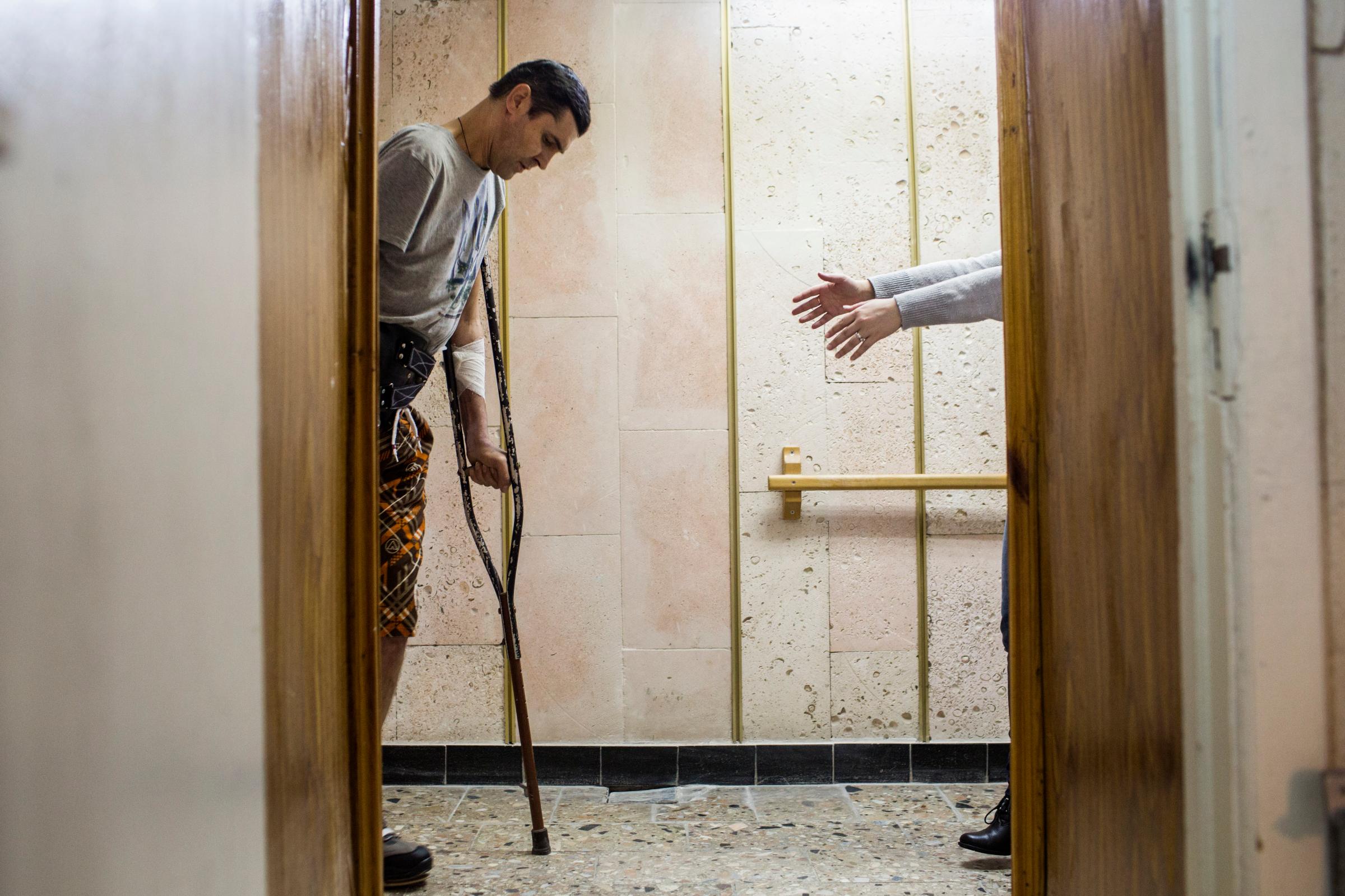
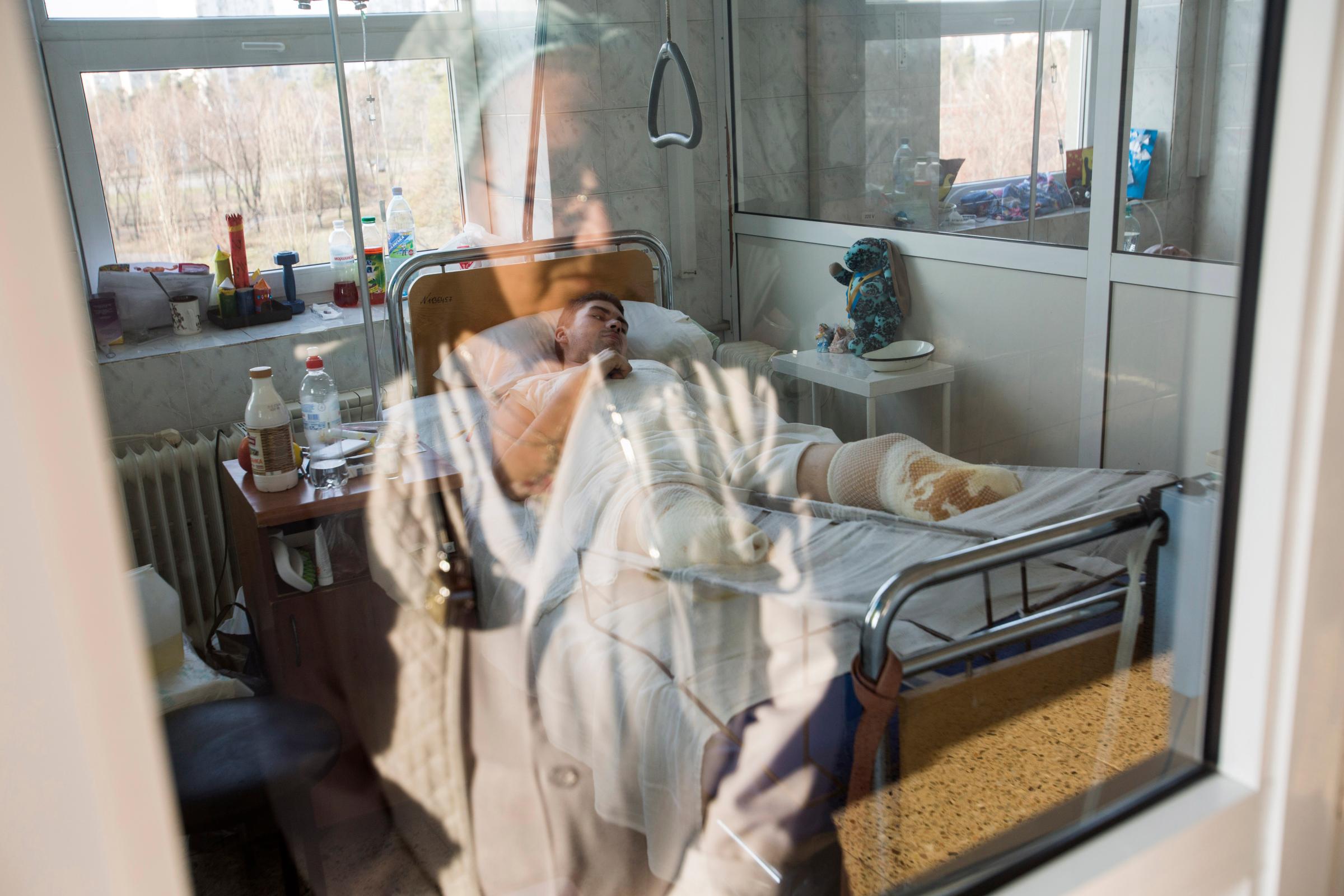




![Honcharovsky is prepared for an X-ray at a hospital where he is undergoing physical therapy, Truskavets, Ukraine, Sept. 6, 2014. He underwent multiple operations in Ukraine and Germany but still has significant medical issues, including extreme pain throughout his body due to nerve damage. "I went to the Maidan on Feb. 1, 2014. I could not sit and watch the disorder [from afar], the beating of children, students as well as their parents at the hands of the Berkut [riot police]," he said. "I could not wait and watch. My heart was being torn apart by what was happening in the country."](https://api.time.com/wp-content/uploads/2016/02/joseph-sywenkyj-ukraine-war-injured-21.jpg?quality=75&w=2400)
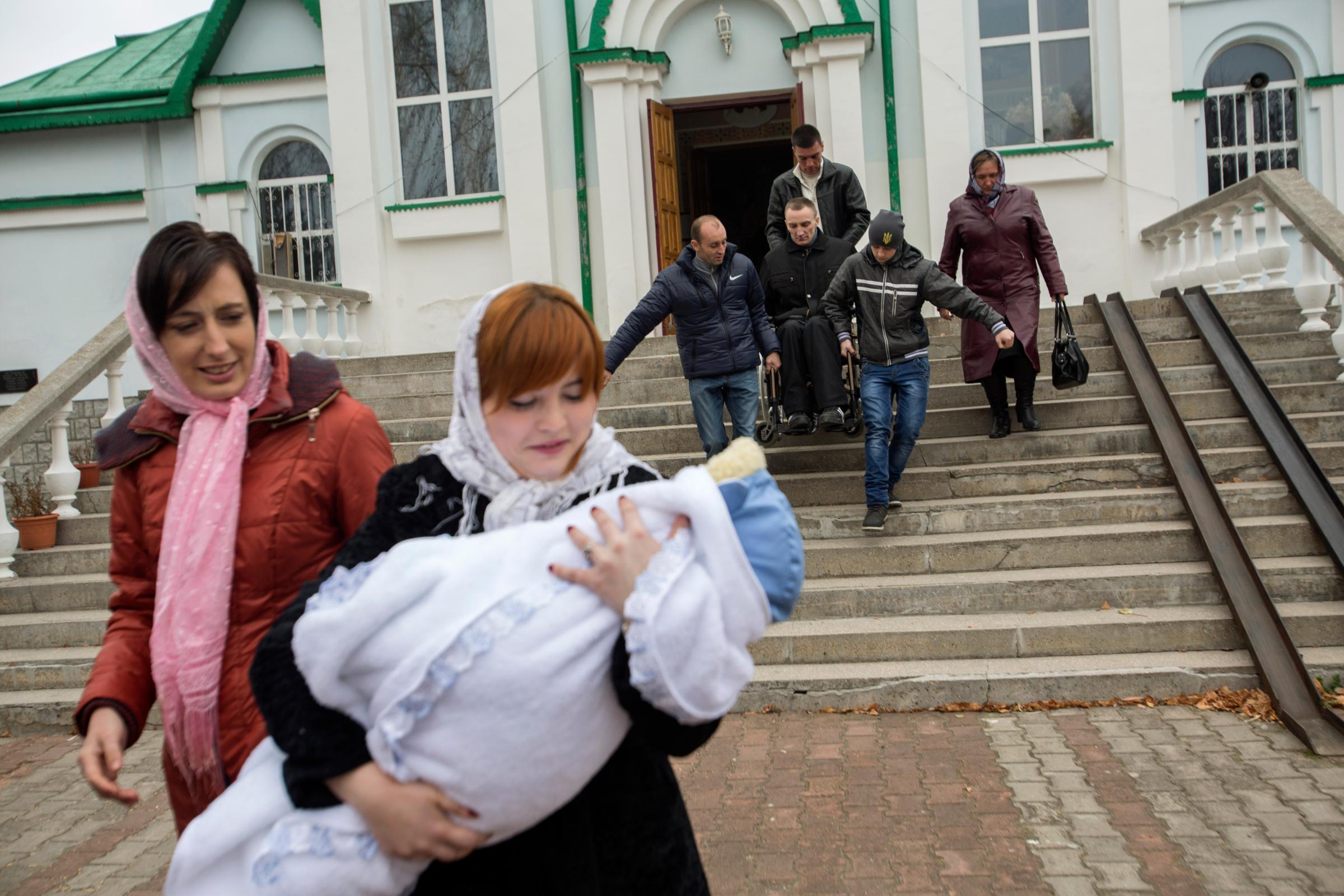
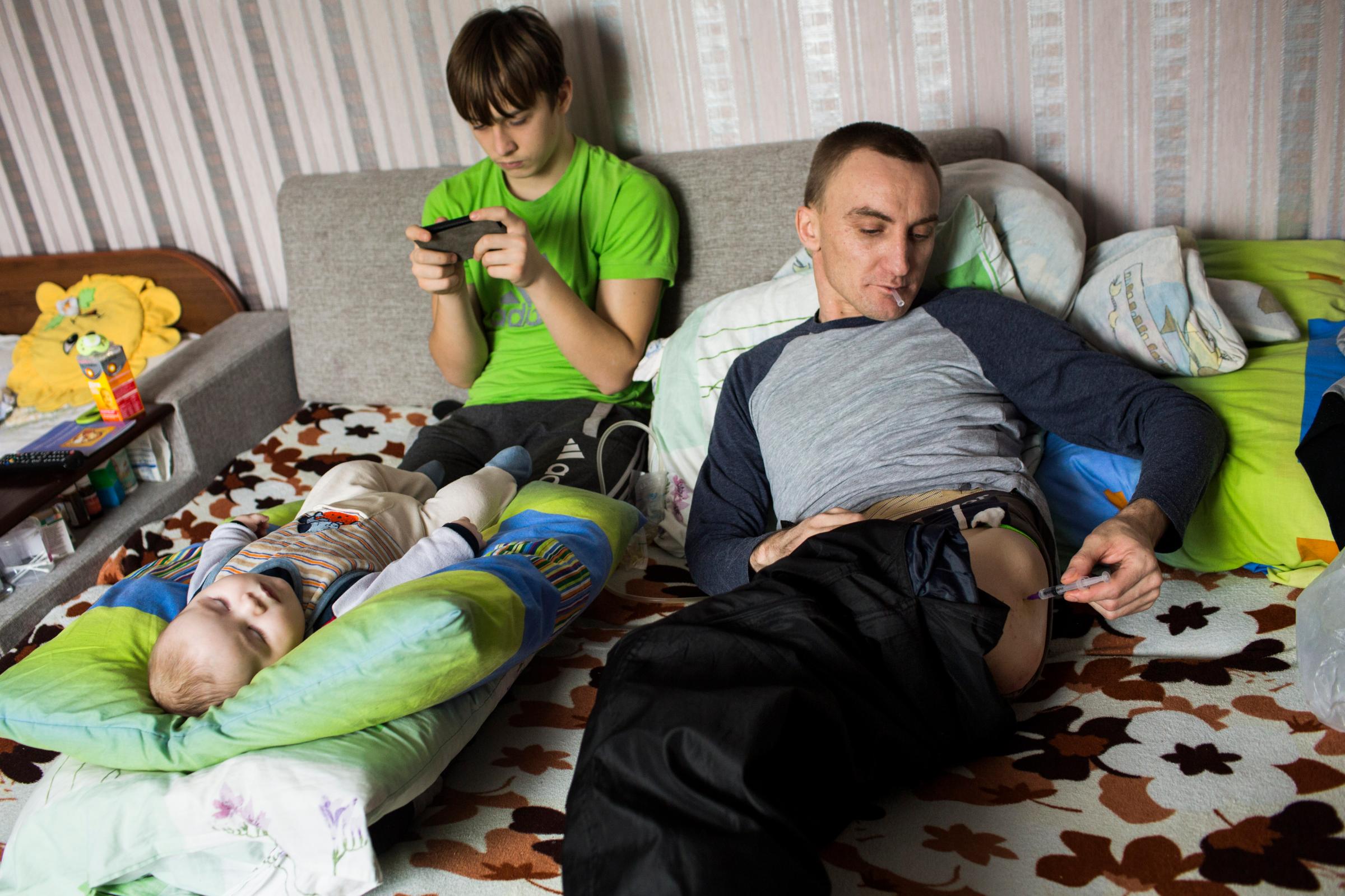
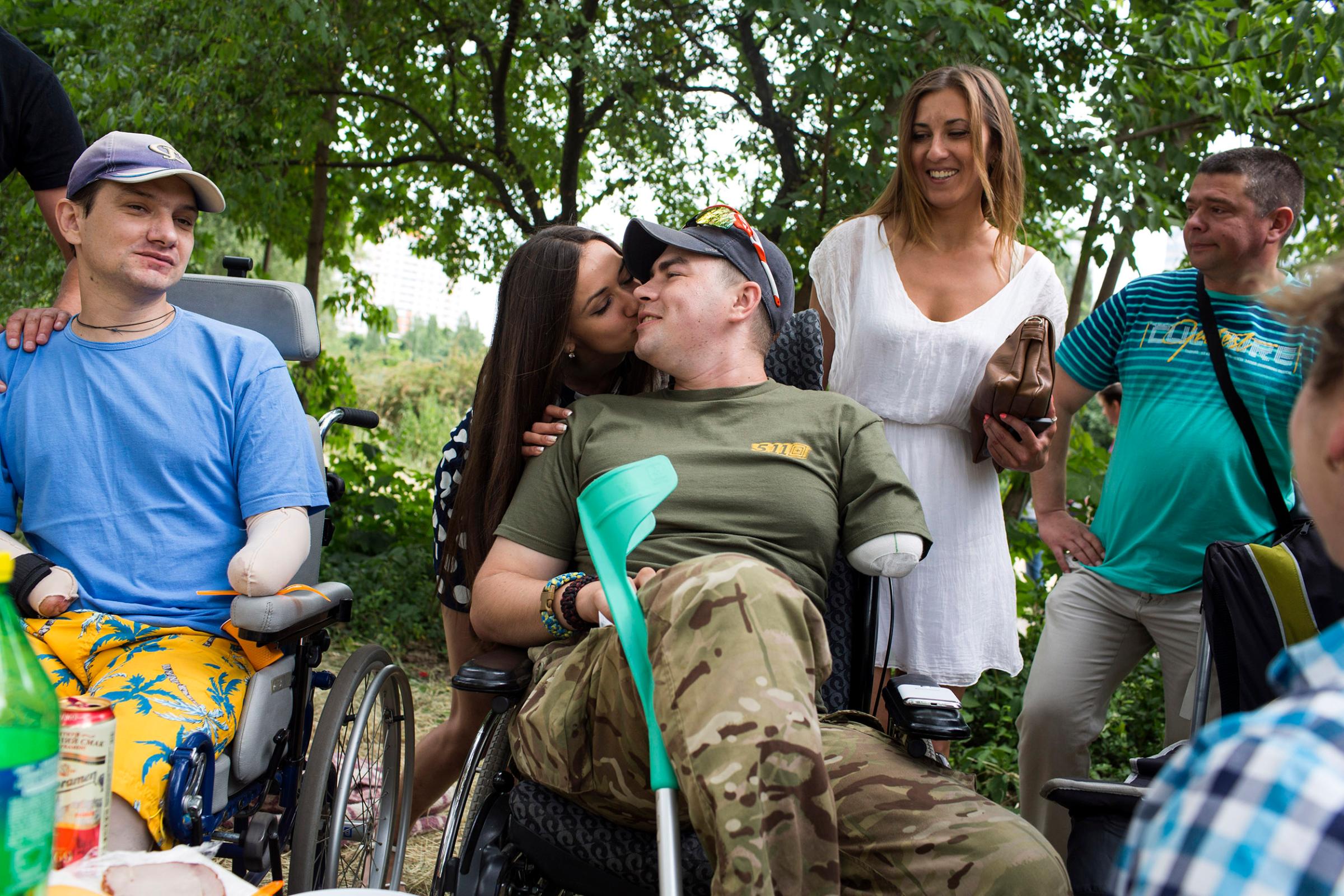

![Ivan Kushnerov, 25, rests on a couch in an apartment where he is staying temporarily in Kiev, Ukraine, March 4, 2015. Kushnerov, who lives in Zaporizhia, was severely wounded in Severodonetsk in November 2014 while serving in the 39th Territorial Defense Battalion of the Ukrainian army. His left hand and three fingers on his right hand were amputated, and he has problems with his vision and legs. He worked in advertising before the war and is currently studying part-time to become a journalist. "I feel the pain. Sometimes it is phantom pain. I often have a headache, and my scars ache. This pain is always with me. But, if you feel pain, it means you are alive," he said. "I am now distracted by a lot of things. I require medical treatment, but I want to tighten my fists and go there [to war] because I am very worried about my guys. However, I realize that I will be only a burden for them now."](https://api.time.com/wp-content/uploads/2016/02/joseph-sywenkyj-ukraine-war-injured-9.jpg?quality=75&w=2400)

Both sides got what they wanted. In the spring of 2011, Obama returned to Prague to sign the New Start treaty with Medvedev, and that same day, Russia agreed to support another round of Western sanctions against Iran. The pain of these sanctions proved instrumental in getting Iran to give up its nuclear weapons program four year later, perhaps Obama’s most notable foreign policy achievement.
On paper at least, the New Start treaty also looked impressive. Both sides agreed to cut their arsenals of long-range nuclear missiles in half and to reduce the number of warheads by around three-quarters. But in practice, the New Start treaty allowed Russia to scrap many of its old silo-based missile systems while pushing ahead with a wholesale upgrade of its broader arsenal. “The treaty does not prevent you from modernizing,” says McFaul, who went on to become the U.S. ambassador in Moscow from 2011 to 2013. “In terms of parity, they felt like they needed to modernize, whereas we didn’t feel that way.”
It will still take Russia at least until the end of this decade to complete its nuclear modernization program. But it is off to an impressive start. Moscow is building a new generation of long-range nuclear bombers, truck-mounted ballistic missiles and nuclear-armed submarines. In the past two years, Russian officials and state-run media have routinely boasted about the fruits these efforts, often under giddy headlines like this gem from the Sputnik news agency: “Rail Phantom: Russia developing invisible death trains with nukes.”
This seems far from the spirit of Medvedev’s term as president, which ended in 2012 with Putin’s return to the Kremlin’s top post. The New Start treaty, Medvedev told me in mid-February, “was a great achievement in Russian-U.S. relations, and it was good for the international situation.” Later in our interview, he added: “It’s a shame that things began to take a different path after that.”
In the the foreseeable future, Medvedev said, Russia would have no choice but to develop weapons like Status-6 to balance against the enormous advantage the U.S. enjoys in conventional arms. (Washington spends more than seven times as much on defense as Russia, which will have to cut its military spending this year, thanks largely to a shrinking economy.) “Isn’t that scary? Yes, it is very scary,” Medvedev told me, referring to these weapons. “If hundreds or thousands of such missiles are used in an attack, the consequences will be just as devastating” as a nuclear strike.
This point came back to the essential paradox of Russia’s position on nuclear weapons. It is the very real feeling of weakness and vulnerability that makes Russia cling to its most destructive and dangerous arms. And until Russia’s leaders are made to believe that the U.S. does not wish them any harm, Obama’s vision of a nuclear free world will never be realized.
Obama admitted as much at the nuclear security summit in Washington. “It is very difficult,” he said at the closing news conference, “to see huge reductions in our nuclear arsenal unless the United States and Russia, as the two largest possessors of nuclear weapons, are prepared to lead the way.” From the start of his tenure, Obama tried to take that lead, likely believing that the Cold War had, as he put it, “disappeared.”
But his most important partners in this effort saw things differently, says Samore, his former adviser. “To some extent Obama didn’t appreciate how the level of Russian paranoia and fear of the United States continued to permeate their defense and security establishment,” he says. “For them it was so old school. He just didn’t see it.” By now, as he prepares to leave office, Obama most certainly does.
More Must-Reads from TIME
- Cybersecurity Experts Are Sounding the Alarm on DOGE
- Meet the 2025 Women of the Year
- The Harsh Truth About Disability Inclusion
- Why Do More Young Adults Have Cancer?
- Colman Domingo Leads With Radical Love
- How to Get Better at Doing Things Alone
- Michelle Zauner Stares Down the Darkness
Contact us at letters@time.com